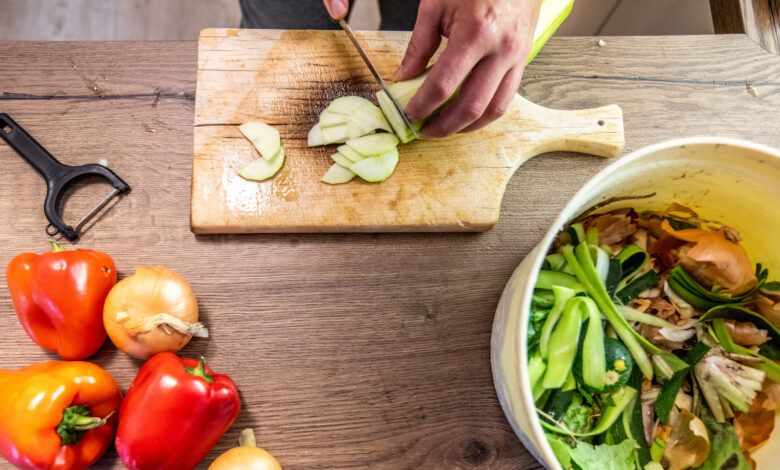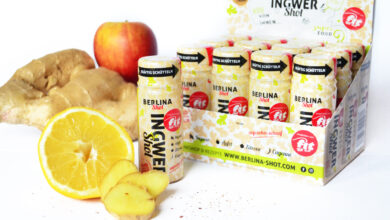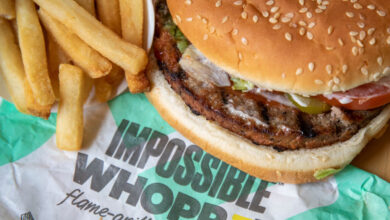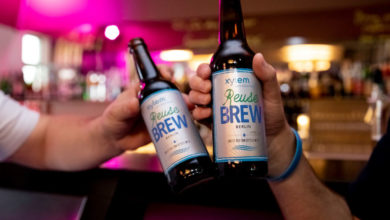
Organic Waste Recycling Bin on Kitchen Counter. Photo Credit: CasarsaGuru/Getty Images
Special ReportTHE FUTURE OF FOOD 4: What to Do with Food Waste? Make Straws, or Vases, or Soil
There is a new, strong trend: Reusing food waste to create new products. Examples? Straws made from avocado pits, flower vases from used tea bags, or drinks from orange peels. The goal: Let’s avoid throwing leftovers in the garbage can!
Restaurants around the globe have started now to translate this philosophy into a trendy concept: Several eateries in international cities have opened as „zero-waste“ restaurants. Where garbage was seen as being inevitable and kitchen crews threw meat fat, cut-offs from vegetables, and once-used plastic wrap into black bags, these restaurants now not only avoid plastic waste but also use the entire food product.
Eating out produces tons of waste. According to researches, the restaurant industry loses around 162 billion dollars annually in food waste costs for edible produce. With containers, packaging for delivery orders, and paper for receipts masses of trash are generated every day by millions of restaurants. The aim of the zero-waste restaurants is to lessen their environmental impact while running a profitable venture — and often even rising the eco-consciousness among the customers. While the corona pandemic has been hurting these places as much as it has “normal” restaurants, their special profile could now be an asset for survival:
- A pioneer in the zero-waste gastronomy is the restaurant Silo, which in 2019 relocated from Brighton to London, England. The ethical eatery, which opened its doors in 2014 already, offers regional bio-products and cultivates vegetables and other food in its own gardens. The production of waste has been eliminated by trading directly with farmers, using re-usable delivery vessels, and choosing local ingredients that themselves generated no waste. Leftovers find their way into the compost machine set inside Silo and the compost is used to produce more food, closing the loop.
- In Berlin, Frea is Germany’s first zero-waste restaurant. The vegetables come from local bio-farmers, oil and vinegar bottles are recycled with a deposit return scheme, flour or buckwheat are delivered in reusable paper. And what happens to the leftovers? „Gersi“ gets to for action. „Gersi“ is the restaurant’s composter, which turns leftovers into soil material in about 24 hours, delivered to farmers who spread it on their fields.
- There is also Mettä in New York: one of the first-ever zero-waste restaurants, it was dubbed the as „the Tesla of eating establishments“ by local critics. The restaurant, which was already carbon-neutral, sources ingredients that come in compostable or reusable packaging and composts any food scraps left on customers’ plates. Even the cheese rinds are upcycled. It recently re-opened in Brooklyn under the same management with a new name as Rhodora. „We’re in the business of serving people,” said Henry Rich, a co-owner of Rhodora, according to the New York Times. „And it feels incongruent to take care of somebody for an evening and try to show them a great time, and then externalize the waste and carbon footprint of that evening onto people.”
THE FUTURE OF FOOD 5: From Hollywood to Burger Joint: Flexitarians Turn Menus Upside Down follows next Wednesday, October 7.
Written by Marika Schaertl, freelance journalist, Munich, Germany.



